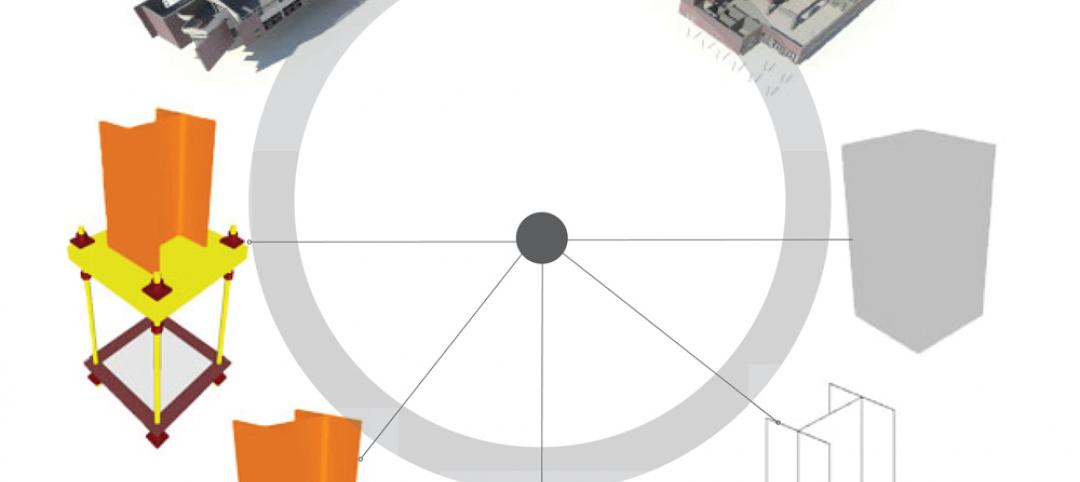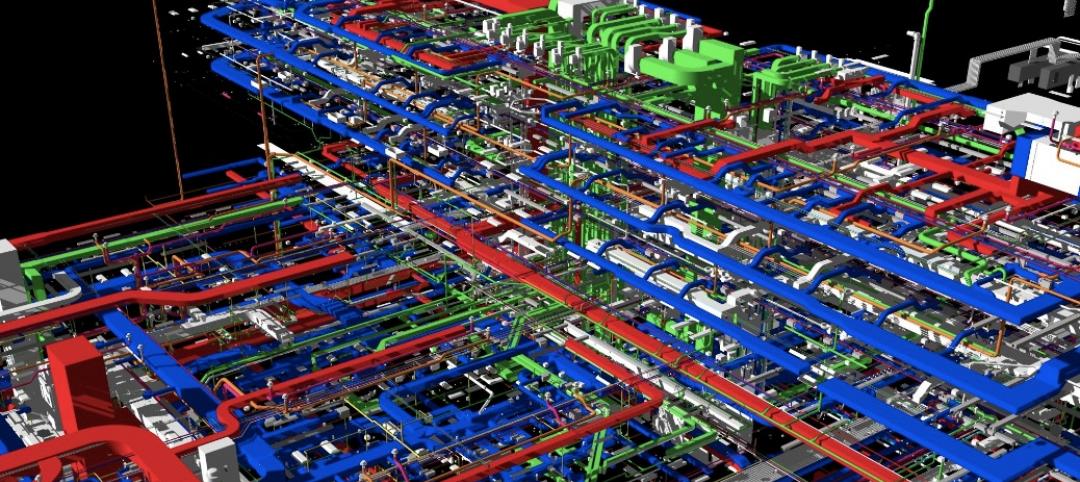For more than a decade Building Information Modeling (BIM) has been increasing its market share as the primary documentation tool for the architectural practice. BIM promises a more collaborative and integrated design and (hopefully) construction process. The fear is a “Wild West” amalgamation of models authored by various parties, unclear responsible control and licensing issues, and the reliability and changeable nature of digital data.
As architect’s, we’re at ground zero for this change being faced with increase requests and pressure to share the digital model with other project participants. While you could treat your BIM files like your old CADD files and avoid the risks by requiring a signed release agreement absolving you of any responsibility for Model content, that’s not how the BIM world is supposed to work. Sharing of and reliance on BIM data is central to the idea that BIM will lead to a more efficient, more economical, and more collaborative construction process. So rather than hunkering down and avoiding all risk, architects can intelligently embrace the opportunity and try to reap the rewards of improved efficiency, providing your client with a better value proposition and potentially reducing your exposure to project risk.
Establish ground rules with the AIA’s E203
There is no question that this is a transformational change to the rules of the game. When the model leaves the protection of your network there are legitimate concerns to address. Who is using it? The people I authorized, of course, but who did they give it to? What are they using it for? Please don’t tell me my Schematic Design Model being mined for material take-offs! These are legitimate questions and concerns, but they do not need to be showstoppers. To accommodate sharing your model, you need to be able to establish some ground rules for how the data will be used, who is allowed to use the data and what the consequences are when it is used differently. The AIA’s digital practice family – the E203/G201/G202 documents – provide a good contractual and practice tool for managing your BIM use and establishing those ground rules.
E203-2013 Building Information Modeling and Digital Data Exhibit is an exhibit document intended to be attached to the parties’ agreement. It covers the general issues related to the use of BIM. E203 establishes the basic ground rules, while the specific details are memorialized in G202-2013 Project BIM Protocol. This organization – an exhibit and separate form – allows you to establish a baseline understanding when a project is just getting started and then elaborate on that understanding as the project develops without amending the contract.
The most important aspect of E203 is the obligation it imposes on both parties to incorporate it in any subsequent agreement either party may execute with another project participant. This flow down obligation means that everyone on a project now has to play by the same BIM rules. The story doesn’t stop at the E203. In order to confidently share your model, you must set a floor for the minimum amount of information that will be provided and a ceiling for what users of can do with that information. These Use and Reliance characteristics are the basis for determining the Level of Development for model elements, and G202 provides the framework to accomplish this task.
The G202 table lists each model element and then provides columns to define the Level of Development and the party responsible for modeling that element for each relevant project milestone. It is important to note that we are talking about model elements and not the whole model. Every model is an aggregation of model elements each developed to an appropriate level, but not uniformly for the whole model – a door, for example, is quite commonly modeled at Level 200, but the hardware for that door is still described in the metadata, not actually modeled.
State of Utah started simple
At first glance, E203 and G202 are daunting document – literally pages of information and dense tabular material with many boxes to fill – but once you’ve worked your way through that first G202, the rest will be easier. It’s pretty easy to dip your toe in this water. Develop a baseline version of E203 and G202 for use on every project. Start simple – find the lowest common denominator in the spectrum of your work and design your baseline to that as opposed to thinking about the most complex project you might encounter. In our initial attempts at this we, found that we placed too high a Level of Development (LOD) expectation for many model elements – yes, you might choose to model something to a higher level in order to explore the design idea, but in order to meet the obligations of your contract you only need to model to something less. Most public work that falls under procurement law requirements shouldn’t need elements modeled beyond LOD 200.
If you need an example document, the State of Utah, Division of Facilities Construction and Management has two licensed versions of G202 that set the protocols for its projects. One is designated for the design-bid-build delivery model where the model is not intended to be used by the constructor, and the other is optimized for a Construction Management delivery model where the CM is expected to use the model during construction.
The payoff
Of course, it’s not just about the forms. Undoing 30 years’ habit is not easy. Your staff has to understand that there is no more disclaimer – we are trusting the model, and it has to be accurate – and they have to believe there is a benefit to your practice to do so. But, if you’re careful in establishing your baseline protocol, I think you’ll find that there is no more effort involved for you to prepare to share a model than you were already making when you thought it was inconceivable.
The trends in the marketplace are clear. Increased collaboration, model sharing and the comingling of design and construction data is coming if not, at least to some degree, already here. Will you be left behind, or will you find a way to manage the risk and provide your clients with greater value and service?
Related Stories
| Oct 18, 2013
A picture’s worth a thousand words… if you can find it
Photographs are becoming more essential to project communication and documentation. Recently, I sat in a local airport integration project meeting in which the owner outlined their expectation for construction documentation. One of the first requirements was to provide photographs throughout the building process.
Sponsored | | Oct 7, 2013
Bridging the digital divide between the BIM haves and have nots
There's no doubt that BIM is the future of design. But for many firms, finding a bridge to access rich model data and share it with those typically left on the sidelines can be the difference between winning a bid or not.
| Oct 2, 2013
Corporate HQ in 10 months made possible with BIM coordination
An integrated Building Team uses BIM/VDC to convert a 1940s-era industrial building into a flashy new headquarters for Hillshire Brands in a matter of months.
| Sep 26, 2013
Mobilizing your job site to achieve a paperless project: fact or fiction?
True mobility in the field has rapidly evolved from lock-box kiosks on each floor to laptops on rolling carts to tablets and iPads loaded with drawings sets stored in the cloud. And WiFi-ready job sites have gone from “nice to have” to “must have” status in just a little over a year.
| Sep 4, 2013
Augmented reality: 12 applications for design and construction professionals
Building Design+Construction reached out to AEC professionals who have studied and applied augmented reality and asked them to pinpoint applications that are ripe for the technology. Here’s what they had to offer.
| Sep 4, 2013
Augmented reality goes mainstream: 12 applications for design and construction firms
Thanks to inexpensive mobile devices and increasingly advanced software apps, Building Teams are finally able to bring their BIM models to life on the job site.
| Sep 4, 2013
Smart building technology: Talking results at the BUILDINGChicago/ Greening the Heartland show
Recent advancements in technology are allowing owners to connect with facilities as never before, leveraging existing automation systems to achieve cost-effective energy improvements. This BUILDINGChicago presentation will feature Procter & Gamble’s smart building management program.
| Aug 8, 2013
Level of Development: Will a new standard bring clarity to BIM model detail?
The newly released LOD Specification document allows Building Teams to understand exactly what’s in the BIM model they’re being handed.
| Jul 19, 2013
Top BIM Construction Firms [2013 Giants 300 Report]
Turner, Clark Group, DPR top Building Design+Construction's 2013 ranking of the contractors and construction management firms with the most revenue from BIM-driven projects.
| Jul 19, 2013
Top BIM Engineering Firms [2013 Giants 300 Report]
Jacobs, URS, SAIC top Building Design+Construction's 2013 ranking of the engineering and engineering/architecture firms with the most revenue from BIM-driven projects.

















